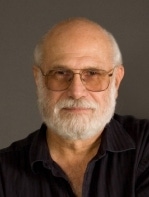Blog: Soft and cuddly robots
March 11, 2015

I started getting interested in soft mechanical actuators—artificial muscles—about forty-five years ago. At that time, I hoped the technology could be used to improve then-clunky artificial hearts, and looked at the possibility of using the contraction of miniature magnetic solenoids to mimic muscle fibers.
That didn't work out too well, and since then I've tried to keep abreast of what others thought up to replace rigid, heavy, clumsy electric motors for mechanical actuation. So far, nothing seems to really do the job. The most promising has been arrays of soft polymer cells bloated by hydrostatic pressure. But, that's still too slow and cumbersome. I looked at that solution around the turn of the millennium as a means of controlling aircraft wing shapes.
The latest impetus for developing soft mechanical actuators is to power the mechanical systems in robots. There are a couple of projects seeking to build soft-bodied robots that have come to my attention recently.
One is the Octopus project funded by the European Commission with participation by academic researchers in Europe and Israel. It's aim is to build a soft robot that mimics the capabilities and actions of a real octopus. Presumably, a robot octopus will be more amenable to human direction than Nature's version, and can be induced to perform meaningful tasks.
The little critter is powered by shape memory alloy (SMA) drivers and steel cables, and isn't quite as soft as it's cracked up to be. Also, since SMA motion is predicated on temperature changes, I have trouble seeing it as fast acting, reliable and adaptable. Octopus is, however, a step in the right direction.
The second project is funded by the Defense Applied Research Projects Agency (DARPA) of the U.S. Department of Defense, and really deserves the epithet "soft." This ugly sucker, built by G.W. Whiteside at Harvard University, is made entirely of silicone. It consists of a number of closed cells that can be expanded by compressed air to become rigid and power movement. It's sorta like the technology I was fiddling with ten years ago, but they made it work.
The problem with compressed air technology (more formally called "pneumatics") is that it's complicated, noisy, bulky, and relatively slow compared to the electric motors usually driving non-soft robots.
Frankly, I like this pneumatically powered beastie better than the Octopus. I can see its being the basis of a whole host of mechanically powerful robots adapted for different tasks. But, it ain't there, yet.
C.G. Masi has been blogging about technology and society since 2006. In a career spanning more than a quarter century, he has written more than 400 articles for scholarly and technical journals, and six novels dealing with automation's place in technically advanced society. For more information, visit www.cgmasi.com.
.
About the Author(s)
You May Also Like


